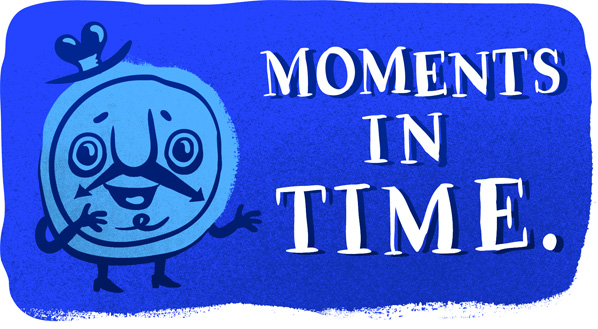Our city has a history. Sure, it’s not especially long or hugely interesting history – but it has its moments. These are them.
Moments in time #6 – Whale of fortune
The early economy of Adelaide was built almost entirely upon humped backs.
Although today the whaling industry is regarded by many Australians to be scarcely a notch above the lone psychopathic gunman industry, in the early days of the colony it was the central pillar of the economy. In fact, the factor that convinced the South Australia Company that it might be worthwhile to take the trip to the weird bottom-middle bit of New Holland in the first place was the potential for huge sacks of money to be made through whaling.
It’s no surprise that South Australia was built on whaling – during the early-to-mid 1800s, driving a spike through the skull of a whale was just about the easiest way for anyone anywhere to make a buck. Virtually every component of a whale’s carcass was in high demand by some sort of industry: whale blubber was used to lubricate giant machines engaged in the business of pulverising small children; whale bone was used for fashioning knitting needles; whale baleen plates were used in corsets; whale meat was eaten; and whale tears were prized for their “deliciously salty zing”* (*not an actual quote or fact).
Whaling was the state’s first major industry and whale cadavers our first major export. Most prized of all were southern right whales, allegedly so named because their proclivity to swim within convenient murdering distance from the shore made them the ‘right’ whales to kill (the ‘southern’ part refers to their legendary love of banjo tunes). Whales were seen as basically lunkheaded, swimming nuggets of gold, and their slaughter sustained the early economy of the South Australia colony right up until the more literal, ground-based nuggets of gold were discovered.
At its peak, the South Australian whaling industry supported over 15 shore-based whaling sites, with much of the activity taking place at Port Lincoln, Kangaroo Island and Encounter Bay. The task of catching whales itself involved a highly complex process of waiting for the whales to arrive and then sticking giant knives in their faces; a decorated job fit only for what one contemporary account affectionately referred to as a “low type [of person], mostly old convicts and the refuse of society”.
Alas, no dream can last forever. Less than a decade since the whale murdering boom began in the colony, it had fizzled out. Although a major part of this decline was due to the discovery of the wonders of petroleum – which drastically reduced the worldwide demand for whale corpse-based goods – perhaps a more direct cause was that the colonists had utterly annihilated the population of whales from our waters. And as an expert in chemistry would no doubt tell you, it is difficult to craft quality whale bone knitting needles when all you have access to is a smattering of fairy penguins.
So it was that, with a rueful shaking of their heads and a melancholy smile, our brave pioneer whalers were forced to hang up their whale killing spears once and for all. Many of them would go on to take up the noble vocation of seal clubbery. And so the beautiful circle of life turns ever on.





